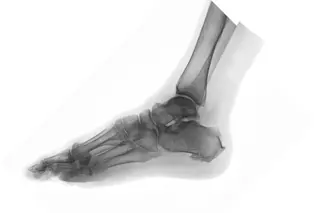1. When Apollo 11 touched down on the moon, could Neil Armstrong have made a “giant leap” if we’d never evolved feet? “One small slither for man” just doesn’t have the same ring to it. In truth, our feet have enabled one of our most impressive, ah, feats.
2. With its big heel bone, short toes and long, stiff arch, the human foot is a defining trait of our genus because it enabled efficient bipedalism: locomotion on two legs.
3. Being bipedal made humans great long-distance walkers and runners while freeing our upper limbs to make and use tools, including weapons. You could say it was a giant leap on the way to becoming Earth’s dominant animals, for better or worse.
4. Already fully bipedal ancestors such as Homo erectus walked out of Africa and across the Old World, reaching East Asia by at least 1.6 million years ago, but ...















